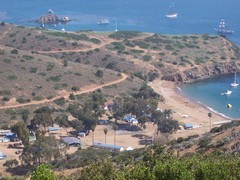The Byzantine politics of Pakistan were briefly illuminated last week by a bombing in Lahore, Pakistan that killed, not only policemen (a tactic of jihadis in Iraq) but members of the ISI, Pakistan’s intelligence service that created the Taliban in the 1980s. Why would the Taliban attack the ISI ? Well, there are Taliban and Taliban.
While analyzing the Lahore attack, one has to keep in mind certain ground realities: The first is that there are Talibans and Talibans, and within each Taliban there are mini-Talibans. There are virtually as many Talibans in the Pashtun belt as there are tribal sirdars (leaders).
The second ground reality is the clear distinction in behavior and operations between the “Neo Taliban” of Afghanistan, headed by Mullah Mohammad Omar, based in Quetta, Pakistan, and the various Pakistani Talibans led by tribal sirdars such as Baitullah Mehsud of South Waziristan; Hakeemullah Mehsud, who is responsible for operations in the Khyber, Kurrum and Orakzai areas; Maulana Fazlullah of the Tehrik-e-Nifaz-e-Shariat-e-Mohammadi (TNSM), who is a native of Swat; and Sufi Mohammad, his father-in-law, who is actually from Dir and not Swat. Of these various Talibans, only the Neo Taliban of Mullah Mohammad Omar, which was created by the ISI in 1994 when Benazir Bhutto was prime minister, still owes its loyalty to the ISI and the Pakistan government.
Now, is that clear ?
I would suggest the Kilcullen book, The Accidental Guerilla , which I reviewed on Amazon in February. There is also Winston Churchill’s The Story of the Malakand Field Force, still in print over 100 years after its publication. It is still mandatory reading in the Army as is his The River War for Iraq. The villages in the story are the same and the conditions have little changed. In fact, a good novel about Afghanistan is Steven Pressfield’s The Afghan Campaign, a fictional account of Alexander’s campaign in 330 BC. Little has changed in Afghanistan except the weapons.


